In the competitive SaaS landscape, marketers face significant challenges in generating qualified leads, nurturing prospects through the funnel, and optimizing campaigns for conversions. As SaaS businesses rely on continuous growth through acquisition, retention, and expansion, overcoming these marketing hurdles is crucial for success. By adopting a strategic, data-driven approach, these challenges can become opportunities for sustainable growth.
In this article, we explore common SaaS marketing pain points and how a refined campaign methodology can help you drive growth and improve results.
Common Challenges SaaS Companies Face
1. Attracting Qualified Leads:
While SaaS companies often generate substantial traffic through organic and paid campaigns, converting this traffic into qualified leads remains a challenge. Many leads show initial interest but are not ready to convert, resulting in wasted effort and lower conversion rates. SaaS businesses must focus on intent-based targeting to attract higher-quality leads that are more likely to engage and subscribe.
2. Slow Funnel Progression:
SaaS businesses often experience a large influx of leads at the top of the funnel but face challenges in moving them through the various stages—trial sign-ups, demos, and eventually, paid subscriptions. Without tailored nurturing campaigns, leads can become stagnant. By deploying personalized drip campaigns and targeted content, SaaS marketers can guide prospects smoothly from awareness to consideration and conversion.
3. Inefficient PPC Campaigns:
Pay-per-click (PPC) advertising is a crucial channel for SaaS lead generation, but without proper optimization, it can lead to high spending and irrelevant traffic. Poorly targeted PPC campaigns result in low-quality leads, wasting budget and delivering poor ROI. SaaS marketers need to refine keyword targeting, ad copy, and landing pages to align better with user intent and drive higher-quality conversions.
4. Disconnected Campaigns Across Multiple Channels:
SaaS marketing typically spans multiple channels—social media, email, paid search, content marketing, and more. However, when campaigns are run in silos, they can lack consistency and cohesiveness. SaaS marketers must create a unified, multi-channel approach that engages users at every touchpoint, ensuring that efforts across platforms are aligned with the SaaS buyer journey.
Addressing These Challenges Through Strategic Campaign Methodology
Now that we’ve identified key challenges, let’s dive into how a structured, strategic approach can help SaaS marketers overcome them. By leveraging precision, segmentation, and data-driven decisions, SaaS businesses can optimize campaigns to drive sustained growth.
1. Precision Ad Spend Allocation with Intent-Based Campaigns: SaaS companies can maximize their marketing budget by aligning ad campaigns with customer intent. Segmenting campaigns based on high, medium, and low intent allows marketers to focus spend on prospects more likely to convert. This strategy ensures that each dollar is efficiently spent on users further along the decision-making process, driving more MQLs (Marketing Qualified Leads) that are primed for subscription or demo sign-ups.
2. Lead Prioritization for Accelerated Conversions: To boost conversion rates, SaaS marketers must prioritize leads based on readiness to buy. Implementing a lead scoring and classification system helps the sales team focus on high-value prospects. By aligning marketing and sales teams with a shared lead scoring framework, SaaS businesses can expedite the buyer’s journey, shortening the sales cycle and increasing conversion rates.
3. Niche Campaigns for Specialized SaaS Solutions SaaS solutions often cater to niche markets with specific needs. Tailoring campaigns for different verticals or use cases allows marketers to target specific audience segments more effectively. By focusing on highly relevant keywords and messaging for each target audience, SaaS marketers can increase engagement, leading to higher conversion rates for niche solutions.
4. Custom Landing Pages to Drive Higher Relevance: SaaS marketers must avoid generic landing pages for all campaigns. Instead, by designing customized landing pages that align with user intent and the unique value propositions of each SaaS product, businesses can provide a more tailored experience. This approach improves lead quality and guides prospects further down the funnel, whether it’s signing up for a trial or booking a demo.
5. Enhanced Attribution for SaaS Growth: SaaS marketers need to implement robust attribution models to track performance across channels and campaigns. Linking SaaS marketing efforts—such as ads, emails, and content—to CRM systems allows businesses to monitor which campaigns generate the most valuable leads and customers. This enables data-driven optimizations to allocate budget to top-performing campaigns and scale them effectively.
6. Ongoing Optimization for Sustainable Revenue Growth For SaaS businesses, growth doesn’t stop after acquisition. Campaigns must be continually optimized to drive revenue growth. By regularly assessing top-performing keywords, ads, and segments, SaaS marketers can shift focus to campaigns generating the highest-quality leads and customers, improving ROI while minimizing inefficient spending.
7. Localized Campaigns for Global SaaS Expansion: Expanding globally is a natural growth strategy for many SaaS businesses. However, global SaaS marketing requires localized strategies that resonate with regional audiences. Tailoring messaging, ads, and landing pages to specific markets—whether in North America, Europe, or APAC—ensures that the SaaS product speaks to local customer pain points and preferences, driving higher acquisition and retention rates.
8. Custom Dashboards for Real-Time Insights: In SaaS marketing, data is king. Creating custom dashboards that integrate marketing performance across channels helps decision-makers track KPIs in real time. With visibility into campaign performance, SaaS marketers can make informed decisions, continuously refine strategies, and stay agile in a fast-paced environment.
Conclusion
SaaS marketing presents unique challenges, but by adopting a strategic, data-driven campaign methodology, businesses can overcome obstacles and drive significant growth. By focusing on precision targeting, lead prioritization, niche marketing, and optimization, SaaS marketers can build a powerful marketing engine that delivers consistent results. Whether running localized or global campaigns, success in SaaS marketing hinges on a holistic, customer-centric approach aligned with the buyer journey.
With the right strategy in place, SaaS companies can unlock new opportunities for growth and expansion in an increasingly competitive market.



